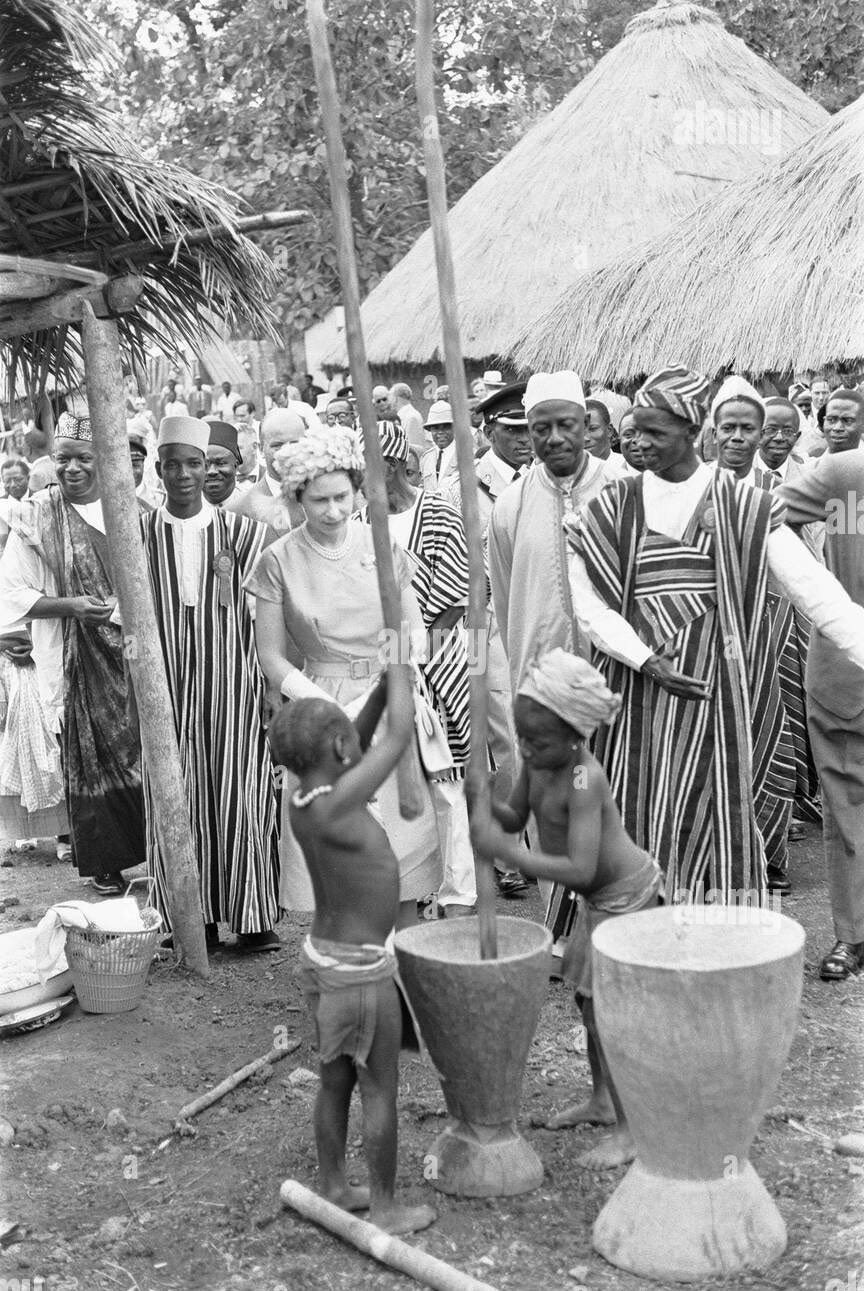Courtesy: Sierra Leone Archives / Other rights imprinted.
This is the year 1961, between November 25 and December 1. This was about seven months after Sierra Leone on the West African coast had been granted Independence by Britain. Queen Elizabeth arrived on her royal yacht named Britannia at a harbor named after her (Queen Elizabeth Water Quay QE II), one of the deepest natural harbors in the world. She was shown around the country, driving in automobiles and for her amusement riding on royal hammocks as were some in her retinue. She was then gifted one of the largest diamonds then found in Sierra Leone, which she had to pick out herself from the sand wash pan.
One of her visits was to a village to see how indigenous people lived in their locales. In the picture above two prepubescent girls attired just in waistcloth are pictured pounding foodstuff in a wooden mortar called Matawodoh in Creole or Kondei in Mende (an offshoot of the Mandingo) dialect. Usually, the larger mortars are reserved for rice milling while the smaller ones the girls are using are for sundry foods like cassava leaves, Foofoo etc. The long wooden pestles are called Ngittei in Mende; these shown however, seem to be unusually long especially for the size of the girls using them.
The Queen seems bemused by the activity, but no doubt surprised by the ambidexterity, of girls, barely 10 or 12 years old wielding those pestles.
The Fashion.
The Queen is modestly attired in a sleeveless dress in cognizance of the very hot and humid climate in one her colonies. The indigenes are dressed in their local garb. Most, if not all of them are officials of the new government, ministers and civil servants trained and molded in the colonial system and its memory. The striped gown seen on the males is made from locally grown and spun cotton and dyed using different plant-based dyes. Despite the heat and humidity these ample gowns are very cool when worn and the white cotton “wrappels” underneath also helps to minimize effects of the hot weather. These officials and hosts were undoubtedly trying to show pride in their local fashion, and not to impress the Queen as it might appear.
On another note: We showed you (you can check the archive) how rice a staple food in many West African countries is dried in a village setting in Sierra Leone. We hope to continue that series with its milling, preparation and serving with various sauces in indigenous dishes in the countries were its consumed. *Also note the palm-thatched-roof houses, similar styles were showed in the same series. *



